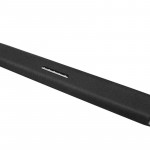
The new Snapdragon X60 modem is set to enhance 5G performance globally
Qualcomm has unveiled its third-generation 5G modem-RF system, the Snapdragon X60. The American manufacturer had planned to launch the chip at the Mobile World Congress in Barcelona next week but brought the announcement forward following the cancellation of the event due to health fears over the Coronavirus.
The X60 is the company’s third 5G chip, following in the footsteps of the X50, which launched in October 2016, and the X55, which was announced in February last year.
What’s new with the Snapdragon X60?
The X60 is the world’s first 5nm process, 5G baseband chip and features high-quality 5G Voice-over-NR (New Radio).
It’s also the first Qualcomm chip to feature 5G mmWave Sub-6 aggregation and 5G Sub-6 carrier aggregation across Frequency Division Duplex (FDD) and Time Division Duplex (TDD) – the two forms of simultaneous two-way communications over a specific channel.
What are mmWave and Sub-6?
Millimetre Wave and Sub-6 are bands of radio frequencies central to the future of 5G. Our phones rely on radio signals to function and these signals operate at various frequencies across different bands.
MillimetreWave, referred to as mmWave by Qualcomm but sometimes described as high-band, relates to extremely high frequencies in the band between 30Ghz and 300Ghz. The frequencies are named millimetre wave as they have wavelengths between 1mm and 10mm.
5G in this band relies on a number of small, low-range cell towers rather than one larger one covering a wider area. This makes deployment costs higher but allows for a greater number of connections in highly populated areas.
Sub-6 relates to radio frequencies operating below 6Ghz. This band typically has better coverage than mmWave but can’t reach the same kind of speeds.
What does the Snapdragon X60 mean for consumers?
By enabling aggregation of mmWave and Sub-6 bands, the X60 can help provide the best of both worlds in terms of 5G capacity and coverage.
They’ll be higher peak speeds, with Qualcomm stating download speeds of up to 7.5Gbps, with uploads capping out at 3Gbps.
It also says the new chip will give mobile operators “ultimate flexibility” in their service provision and that the X60 offers superior power efficiency, which is always good to hear from a consumer perspective.
Additionally, the X60 supports Qualcomm’s third-gen mmWave antenna module for mobile, the QTM535. The QTM535 is narrower than its previous iteration, which will mean that phone manufacturers can make our smartphones even slimmer!
Qualcomm says there are over 340 operators currently investing in 5G and over 275 5G devices either on the market or in development. It estimates that by 2025 they’ll be in excess of 2.8 billion 5G connections globally.
We’ve only recently started seeing the Snapdragon X55 incorporated in 5G devices, so it’s likely to be some time before the X60 makes its way into products on the market. If we had to guess we’d tentatively say the first quarter of 2021, though, with the speed at which 5G is gaining traction, we may get a glimpse at them before the end of the year.
Source: expertreviews.co.uk









































